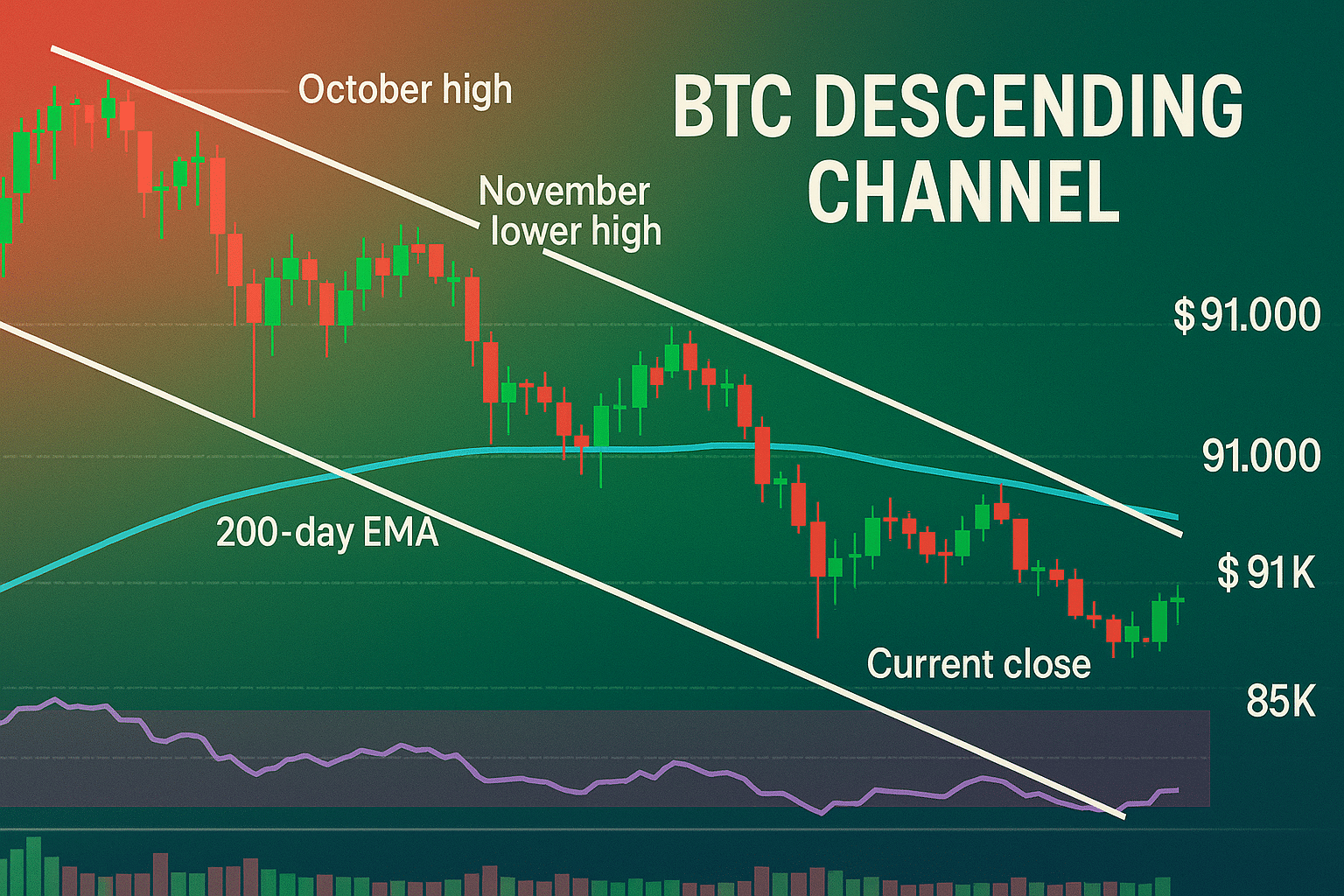FTX Creditors Might Recover Only 10-25% of Their Crypto: Insights from Bankruptcy Documents
Introduction
FTX, once one of the world’s largest cryptocurrency exchanges, continues to make headlines following its massive collapse. Recent bankruptcy documents reveal that FTX creditors may recover only 10-25% of their cryptocurrency holdings. As court proceedings unfold, these findings paint a dire picture for those who lost assets when the exchange failed.
This news has sent ripples across the cryptocurrency market, shaking confidence and leading investors to question the reliability of centralized platforms. Let’s dive into what these bankruptcy findings mean for FTX creditors, how the recovery process might unfold, and the broader implications for the crypto industry.
Are you an FTX creditor or simply curious about the impact of crypto collapses? Let’s explore more.
FTX’s Fall: A Quick Recap
In November 2022, FTX experienced one of the most infamous crashes in cryptocurrency history. The collapse began with a liquidity crisis, followed by revelations of financial mismanagement, poor risk management practices, and fraudulent activity. These events forced FTX into bankruptcy, leaving creditors—both retail investors and institutions—with significant losses.
1. The Bankruptcy Process So Far
Since FTX’s collapse, the bankruptcy proceedings have been slow and complex. The primary task has focused on assessing the company’s total assets and liabilities to determine how much remains available for affected users. With billions of dollars’ worth of cryptocurrency assets tied up, recovering as much value as possible has become a priority for everyone involved.
However, creditors might recover only 10-25% of their original crypto holdings. The shortfall is largely due to the massive debts FTX accrued, combined with a lack of liquid assets available for distribution.
For a deeper look into how corporate collapses impact the broader market, check out our blog on The Impact of Regulatory Changes on the Cryptocurrency Market.
2. The Role of FTX’s Assets in Creditor Payouts
FTX’s remaining assets fall far below the original valuation of the company. The alleged misuse of customer funds by FTX executives has further depleted the available resources. Much of what remains is tied up in illiquid assets or complex legal disputes, making it challenging to return value to creditors quickly.
With limited assets, the bankruptcy court faces the difficult task of distributing these remaining funds fairly among all creditors, both big and small. For a deeper dive into the fall behing of FTX, check out our blog on The Collapse of FTX.
Creditors to Receive Only 10-25%: What Does This Mean?
The expectation that FTX creditors may recover 10-25% of their holdings paints a bleak picture for those hoping to recoup their losses. For many creditors, especially retail investors, the news comes as a significant blow, reducing their initial investment to a fraction of what it was.
1. Why the Low Recovery Rate?
The low recovery rate stems primarily from the shortfall between FTX’s available assets and its liabilities. When FTX declared bankruptcy, billions of dollars’ worth of crypto assets were either missing or inaccessible. Furthermore, the fluctuating value of many cryptocurrencies since the collapse has made asset assessment even more challenging.
The bankruptcy process also incurs significant legal fees and other administrative costs, which further reduce the funds available to creditors. As a result, creditors must now face the reality of receiving only a small portion of what they originally invested.
For more on how losses in crypto projects can impact long-term holders, see our article on The Impact of Airdrops on Long-Term Token Holding.
2. Implications for Retail and Institutional Investors
The 10-25% recovery rate hits retail investors particularly hard, as many of them trusted FTX as a reliable exchange. Institutional investors face similar challenges, but their diversified portfolios might help absorb the impact better than individual retail investors. Regardless, the situation serves as a strong reminder of the risks associated with centralized platforms and the importance of due diligence.
The collapse of FTX and these low recovery estimates have made investors much more cautious about keeping funds on centralized exchanges. The concept of “not your keys, not your coins” now carries even greater significance, urging users to take control of their assets through self-custody solutions.

What Happens Next for FTX Creditors?
With the bankruptcy proceedings still ongoing, several steps remain before creditors can expect to see any recovery of their assets.
1. Court Proceedings and Liquidation
Currently, the bankruptcy court is working to determine the total value of assets available for distribution. This process involves identifying and liquidating FTX’s remaining assets, many of which are tied up in long-term investments or legal disputes. Once the liquidation is complete, the proceeds will be distributed to the creditors.
The distribution process will take time due to the many legal and administrative hurdles involved. This means creditors might have to wait several months or even years to receive their funds.
2. Potential for Higher Recovery Rates?
While the current estimate suggests a 10-25% recovery, there remains a possibility of a higher payout, depending on the outcome of ongoing investigations and asset recoveries. If the court manages to locate more assets or settle certain debts favorably, creditors might see an increased recovery rate. However, relying on this outcome would be speculative and not advisable for financial planning.
This uncertainty emphasizes the risks of investing in emerging technologies like cryptocurrencies. For more insights into how regulatory and legal changes impact crypto investments, read our post on The Impact of Regulatory Changes on the Cryptocurrency Market.
Wider Implications for the Crypto Industry
The FTX collapse and its bankruptcy proceedings have sent shockwaves throughout the cryptocurrency industry. The news that creditors may only recover a fraction of their funds has wider implications, not just for FTX users but for the entire industry.
1. Trust in Centralized Exchanges Erodes
The possibility of such a low recovery rate has further eroded trust in centralized exchanges (CEXs). Users are now more cautious about storing their assets on these platforms, fearing that mismanagement or fraud could lead to similar losses. The emphasis has shifted towards using decentralized exchanges (DEXs) and storing assets in secure wallets where users maintain full control over their private keys.
This situation reinforces the concept that self-custody is essential in the crypto space. Many within the community now advocate for keeping crypto off exchanges unless actively trading to minimize the risk of losing assets through mismanagement.
2. Regulatory Pressure Increases
The FTX collapse has also intensified regulatory scrutiny of cryptocurrency platforms. Regulators worldwide are using this high-profile bankruptcy to argue for stronger rules surrounding customer funds, financial transparency, and overall exchange management.
The prospect of creditors recovering only 10-25% of their investments highlights the inadequacy of existing regulations to protect users of centralized platforms. Moving forward, exchanges may face stricter compliance standards to prevent similar situations.
For more on how these regulatory shifts could shape the industry, check out our article on How Blockchain Is Enhancing Data Privacy and Security.
Conclusion
The FTX bankruptcy remains a painful chapter in cryptocurrency history, and the expected 10-25% recovery rate for creditors underscores the risks of relying on centralized platforms. As these proceedings unfold, creditors must prepare for the likelihood of only partial recovery. The collapse serves as a stark lesson for investors and a wake-up call for regulators.
For investors, this situation underscores the importance of self-custody and conducting thorough research before trusting platforms with their assets. Meanwhile, regulators will likely push for stricter guidelines to protect users from similar crises in the future.
If you’re following the FTX case or concerned about protecting your crypto investments, stay tuned as we continue covering developments in the evolving cryptocurrency landscape.
FAQs
1. Why are FTX creditors only getting 10-25% of their holdings back?
FTX’s limited remaining assets, combined with its high debts and the costs of the bankruptcy process, are responsible for the low recovery rate.
2. What is the next step for FTX creditors?
Creditors must wait for the bankruptcy court to liquidate remaining assets and determine how to distribute them, which could take several months or even years.
3. Can creditors expect to get more than 25% back?
While it’s possible, any higher recovery rate depends on the success of asset recovery efforts and the resolution of ongoing legal disputes.
4. What impact does this have on centralized crypto exchanges?
The collapse has eroded trust in centralized exchanges, prompting many users to move their assets to decentralized platforms or opt for self-custody.
For more insights and detailed guides on cryptocurrency, visit our Crypto Guides Section.
Stay Updated
For the latest updates on cryptocurrency trends and news, follow us on:
- Twitter: https://twitter.com/FreeCoins24
- Telegram: https://t.me/freecoins24
Stay informed with the latest strategies and insights in the world of cryptocurrency at FreeCoins24.io.
Special Offer
For an enhanced trading experience, consider Bybit. Sign up through our referral link to unlock exclusive rewards, including up to $30,000 in deposit bonuses, and elevate your trading journey.

















